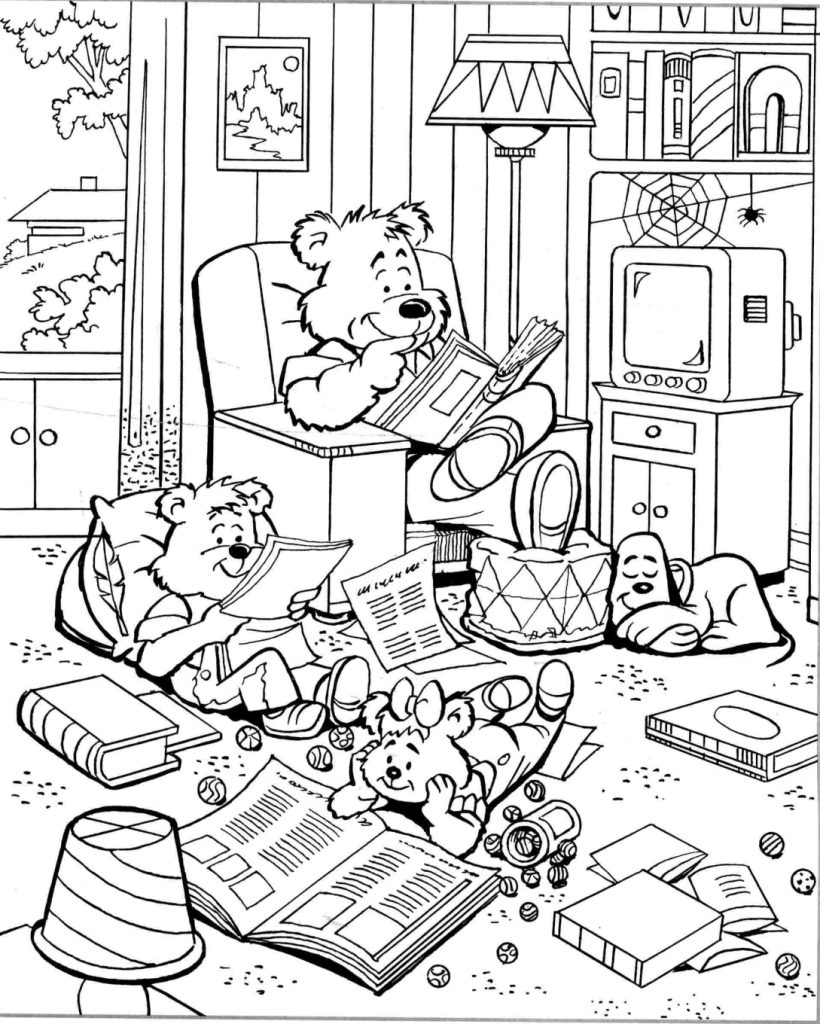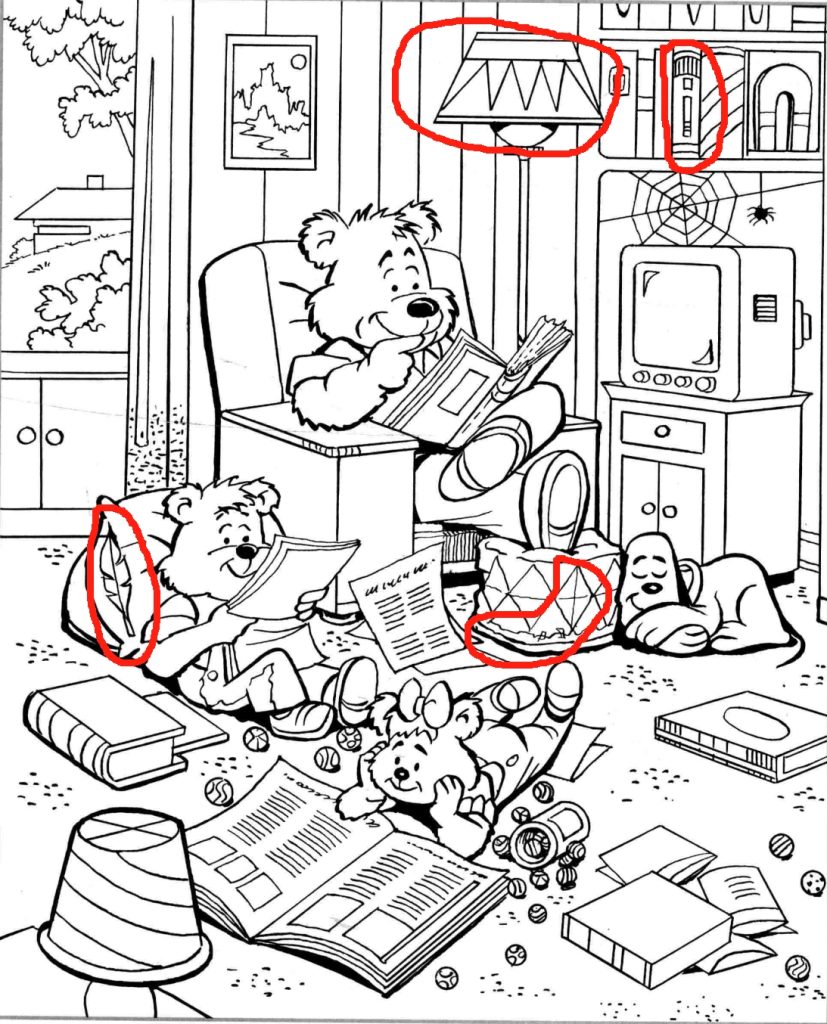The Joy of Family Reading: How Cozy Corners and Caring Bears Inspire Lifelong Learning
Creating a Warm Reading Nook for the Whole Family
Imagine a cozy living room scene: a parent bear nestled in a plush armchair, a young cub lounging on a soft rug, and a curious toddler bear sprawled across a giant storybook. Marbles and papers scattered about hint at afternoon play that seamlessly flowed into reading time. This bustling yet intimate tableau shows that family reading doesn’t need a pristine setting—what matters is connection, comfort, and curiosity. In this article, we’ll explore how to transform any corner of your home into a welcoming reading nook, foster a love of books from toddlerhood to adolescence, and build cherished memories one page at a time.

Why Family Reading Matters: Building Bonds and Brainpower
Reading together is far more than entertainment—it lays the foundation for:
- Emotional Connection: Sharing stories sparks conversations about characters’ feelings and dilemmas, helping children articulate their own emotions.
- Language Development: Hearing new vocabulary in context strengthens word recognition, pronunciation, and reading comprehension skills.
- Cognitive Growth: Following plotlines and predicting outcomes sharpens critical thinking and memory.
- Positive Associations: A comfy, playful reading environment links literacy to joy, encouraging kids to pick up books independently.
Just as the bear family in our scene finds delight in tattered pages and scattered marbles, your family can weave reading into daily routines, creating a tapestry of shared learning and laughter.
Designing Your Perfect Reading Corner
You don’t need a sprawling library—just a few thoughtful touches:
- Comfortable Seating: Mix soft furnishings: an armchair with a cozy throw, floor cushions for floor-friendly readers, and a small footstool for little ones to climb up.
- Accessible Bookshelves: Low, open shelves let children select their favorite picture books or chapter reads without help—instilling independence and ownership.
- Warm Lighting: A floor lamp with soft, warm bulbs near the chair and string lights above the shelf cast a gentle glow that’s easy on young eyes.
- Personal Touches: Include stuffed animal reading buddies (like a sleepy dog on a side table), baskets of marbles or fidget toys for restless fingers, and framed family photos to make the space uniquely yours.
- Rotating Book Display: Feature “Books of the Month” on a tabletop stand—fresh selections keep curiosity alive and make every read feel special.
With these elements, your reading nook becomes a magical portal—just like the bear family’s living room—where stories come alive and imaginations take flight.

Age-Appropriate Reads: From Board Books to Young Adult Novels
Tailoring your library to each family member’s stage ensures engagement:
- Toddlers (Ages 1–3): Sturdy board books with bright illustrations, chunky pages, and simple themes—animals, bedtime routines, first words.
- Preschoolers (Ages 3–5): Rhyming picture books, interactive lift-the-flap titles, early concept stories about numbers, colors, and feelings.
- Early Readers (Ages 5–7): Short chapter books (5–7 pages per chapter) featuring familiar characters, repetition of sight words, and supportive illustrations.
- Middle Grade (Ages 8–12): Engaging series or standalone novels exploring friendship, adventure, or magic—books that balance text with occasional illustrations and manageable chapters.
- Teens (Ages 13+): Young adult fiction tackling deeper themes—identity, history, science fiction, or romance—with complex characters and richer vocabulary.
Just as the bear cubs each hold different books in our image—one poring over a picture-heavy spread, another tackling a gripping narrative—diverse selections cater to every reader’s taste and skill level.

Making Reading a Routine: Tips for Busy Families
Life can get hectic, but carving out dedicated reading time pays dividends:
- Daily Storytime Ritual: Choose a consistent slot—after breakfast, before nap, or at bedtime. Predictability helps children settle into the routine.
- Family Reading Hour: Once a week, let everyone gather in the reading nook with their current book selection. Parents read aloud to younger kids while older siblings share book passages or discuss plot twists.
- Carry-Along Books: Tuck small paperbacks into diaper bags, backpacks, or tote bags so impromptu reading can happen in waiting rooms, during travel, or in line at the grocery store.
- Tech-Free Zones: Declare the reading corner a screen-free sanctuary—no tablets or phones—encouraging full immersion in print.
- Book-Based Activities: After reading, do related crafts: draw your favorite character, act out a scene, or make a simple snack inspired by the story (like the bear family might nibble honey-drizzled toast).
By treating reading as a nonnegotiable part of daily life—just like mealtimes and bedtime—you embed literacy in your family’s culture, day in and day out.

Engaging Interactive Reading Strategies
Turn passive listening into an active, shared adventure:
- Voice Variety: Use different accents and tones for each character—grandpa bear might sport a gravelly voice, while baby bear’s might be high-pitched.
- Predict and Pause: Stop before a pivotal moment and ask, “What do you think happens next?” Let your child’s imagination run free before revealing the text.
- Picture Walks: Before reading, flip through illustrations and have kids describe what they see, hypothesizing about the story based solely on images.
- Echo Reading: Read a line then have children repeat it aloud. This reinforces pacing, expression, and sight-word recognition.
- “I Spy” Elements: Encourage little ones to find specific details—“Can you spot the honey pot on this page?”—building observation and narrative skills.
These playful techniques transform storytime into a multisensory exploration, keeping all ages engaged and invested.
Expanding Horizons: From Books to Real-World Adventures
Bridge the gap between pages and genuine experiences:
- Nature Inspired by Stories: Read a forest adventure and then explore a local park—look for birds, insects, or even deer by a pond, much like the bear family might in their woodland.
- Library Field Trips: Regular visits to public or school libraries let children choose new books, interact with librarians, and attend story hours.
- Author Events and Book Fairs: Attend local readings, book signings, or fairs where kids meet authors, ask questions, and get inspired by literary role models.
- Family Book Clubs: Choose a book everyone can enjoy—picture book for the youngest, chapter book for older siblings—and discuss as a family over snacks.
- DIY Story Creation: Encourage kids to write or illustrate their own tales, crafting simple booklets at home and sharing them during the next family reading hour.
By linking books to tangible experiences, you show how reading opens doors—to creativity, knowledge, and the wider world.

Conclusion: Weaving Lifelong Readers from Play and Pages
In our charming image of a bear family surrounded by books, marbles, and bedtime companions, we see the essence of family literacy: a welcoming space, diverse reads, shared routines, and interactive fun. Whether you’re a parent cuddling a toddler with a board book or a teenager hunched over a YA thriller, every moment spent reading together sows seeds of curiosity and compassion. So gather in your favorite corner, let the pages scatter like marbles across the carpet, and embark on adventures that go far beyond your living room walls—one story, one bear hug, and one precious memory at a time.





